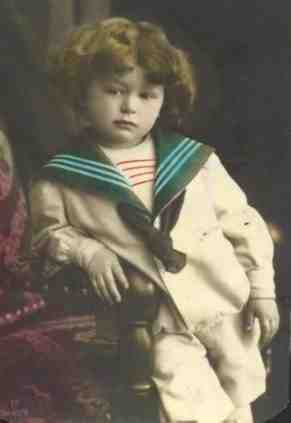
Figure 1.--The Fauuntleroy style was based on a character in a popular 1885 book. Cedric Erol or Little Lord Fauntleroy had an enormous influemce on boys clothing for a generation.


Figure 1.--The Fauuntleroy style was based on a character in a popular 1885 book. Cedric Erol or Little Lord Fauntleroy had an enormous influemce on boys clothing for a generation. |
Children's clothing has been subjected to a variety of different influences. Children's clothes were often more subject to socil trends than adults. Usually adults have considerable choice as to how they dress. This was not the case for children until relatively recently. Comfort is a key criterion for the moder child. But historically children often has little say about their clothing and often comfort was not a major concern for the adults purchasing his clothes.
Some of the major influence on children clothes since specially designed styles first appeared for children in the late 19th Century include:
Can it be an accident that the Victoria's and latter English monarch's choice of the kilt and sailor suit to dress their boys was simply happenstance. Wearing the kilt made good political sence helping to win popularity in Scotland for an English soverign. The sailor suit helped wrap the mantle of the Navy--the most esteemed English institution--around the monarchy. Many other examples exist such as Marie Antonotte, in the years before the French Revolution (1789), dressing the Dauphin (French vrown prince) in peasant trousers to curry the favor of the public.
Some Government have promoted clothing styles to promote philosopical ideals. The Third French Republic in the 1870s mandated smocks for school wear to reduce class distinctions in the country's schools. The Republican ideal wa for both poor and rich children to come to school in similar dress.

Figure 2.--The sailor suit proved to be style that was poular with both boys and parents. It reached its peak of popularity at a time that major world powers began to build modern navies to carry their flags around the world. |
Clothes from time immemorial have been used to convey social rank and affluence. Thus the Fauntleroy with expensive velvets and elaborate lace ruffles was ideally suited for the benefeciaries of the new expanding industrial economies in America and Europe. The less affluent would try to copy the outfits which led to more elaborate outfits with lrger lace collars and more ruffles that was increasngly difficult to copy at low cost.
It was once possible to determine where a boy was from by the style of clothes he was wearing. There were some trans-national styles, but boys often wore styles there gave defiite cluses as to where he was from. The major fashion centeres were, for the most part, understandably the larger countries. The most important were: America, England, France, Germany, Italy, and Scotland. Country styles affected fashions in other countries. In some eras a particular country set fashion and in other eras they primarily imported fasshions developed in other countries. To some extent this reflect the power of the nation state. Dominate countries were more like to export than import fashions. Another major factor in determining the flow of fashion was the importance of parental desires.
The fervor of the Civil War produced many children's costumes based on military uniform. The Zouave uniform inspired a variety of boys' suits. Certainly the rising nationalism of the late 19th Century in part explain the popularity of the sailor suit. Other styles are associated with cerain countries, such as German liederhosen, Scotch kilts, French berets, and other garments. Some of these garments were worn as an expression of nationalism.
Many book characters influence boys' clothing. Buster Brown and Little Lord Fauntleroy are perhaps the two leading examples of this. Other characters have more commonly simply adopted the standard boys' clothing of the era, such as Penrod chofield and William Brown and had little impact on fashion. Many of the most famous boy literary characyer appear to either American or English. Thus it is primarily American and English fashion that are best reflected in the classic children's books.
HBC at this time is unsure just to what extent that school uniform styles have influence boys' clothing or been primartily a reflection of it. Surely the adoptiin of the blazer by British schools has helped o make the navy blue blazer and grey slacks a standard of American boys wear and the "preppy" style.
Technological changes are another factor which can cause fashion movements across national borders. Major technical advances can cause fashion shifts. The commercial development of synthetic fibers by American companies has been an important post-World War II development, although HBC is not sure that this was an importantvfactor in the spread of American fashion. The technicaladvances assiciated with jeans were quite inovative in the mid-19th century, but jeans did not become an important fashion in other countries until after World War II.
Cultural shifts are a poweful factor afecting the movement of fashion. The increasing shift towaed casual life stles were a factor in making casual American fashions like jeans and "T"-shirts popular around the world. The increasing loss of parental authority is another important cultural shift. As children assumed a greater role in selecting their owen clothes, it has been comfortable, casual American styles that they have wanted to wear.
Navigate the Historic Boys' Clothing Web Site:
[Return to the Main essay page]
[Introduction]
[Activities]
[Bibliographies]
[Biographies]
[Chronologies]
[Contributions]
[Countries]
[Style Index]
[Boys' Clothing Home]
Navigate the Historic Boys' Chronology pages:
[Return to the Main chronolgy page]
[Late 18th Century]
[The 1800s]
[The 1810s]
[The 1820s]
[The 1830s]
[The 1840s]
[The 1850s]
[The 1860s]
[The 1870s]
[The 1880s]
[The 1890s]
Navigate the Historic Boys' Clothing Web style pages:
[Short pants suits]
[Blazers]
[Lace collars
[Fauntleroy suits]
[Sailor suits]
[Ring bearer/page costumes]
[First Communion suits]
